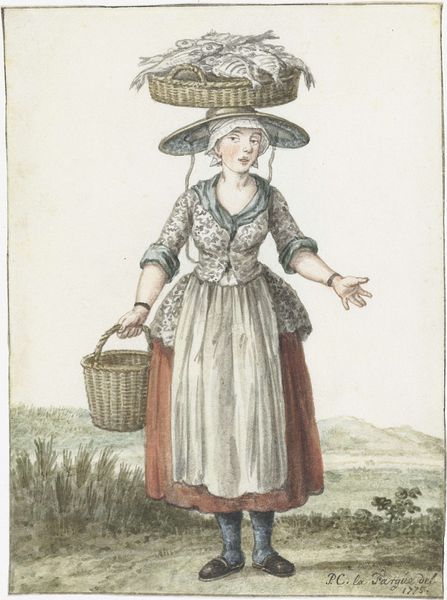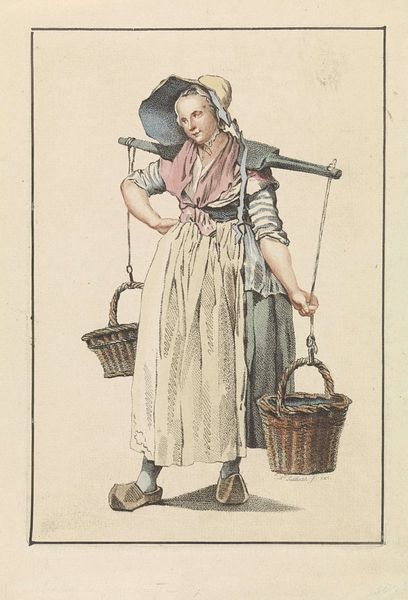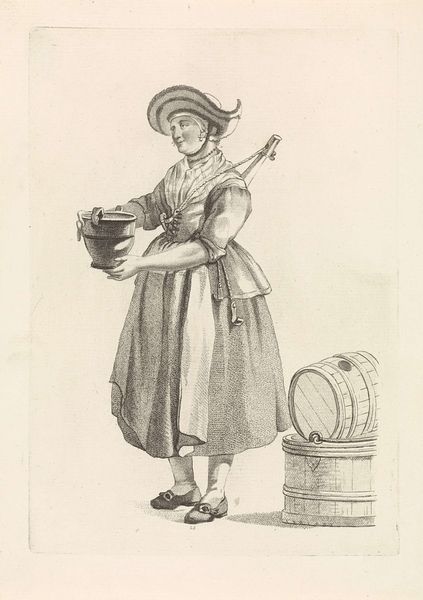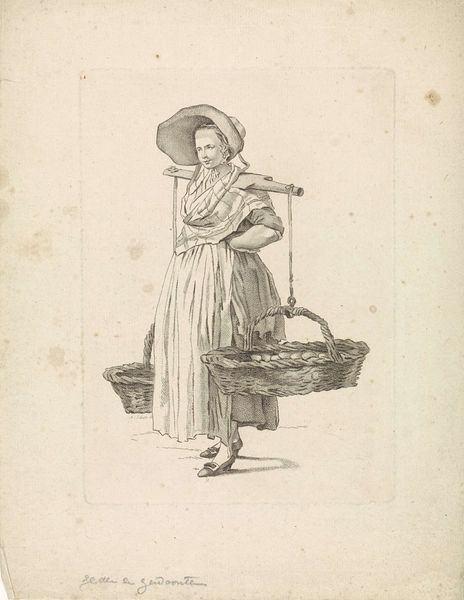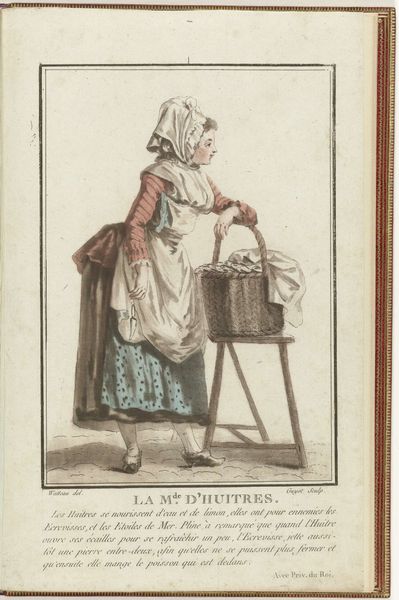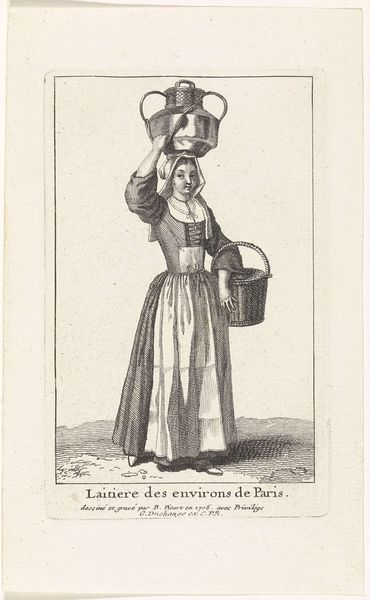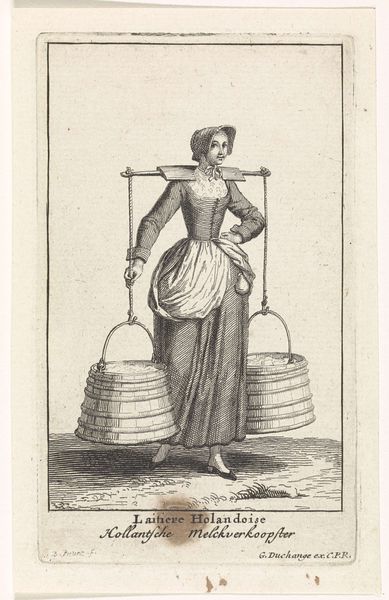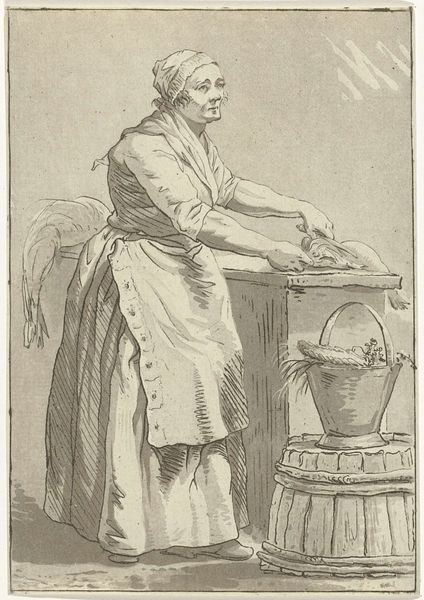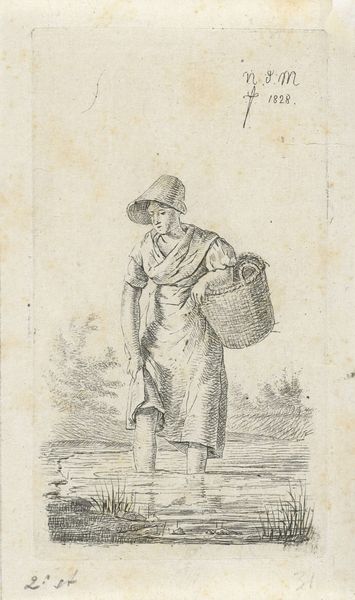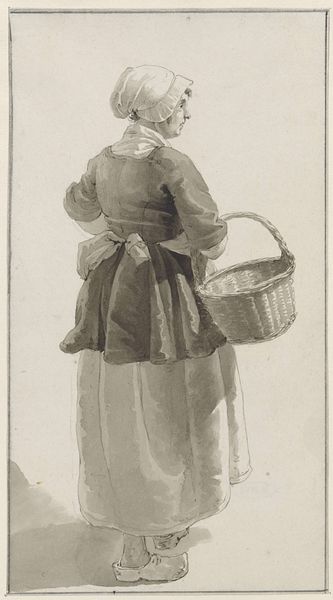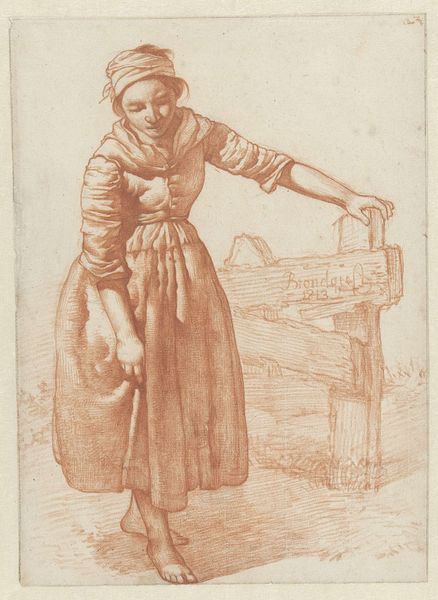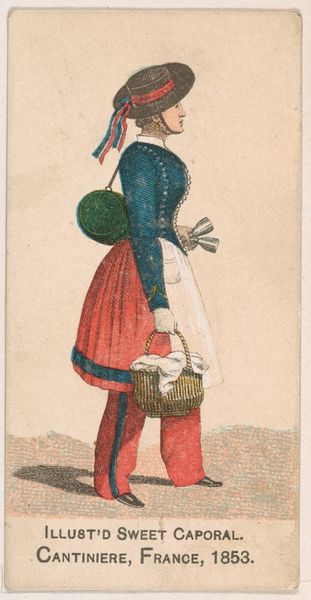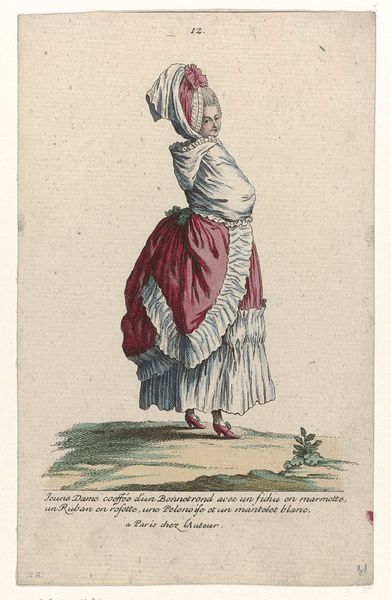
Petite Galerie Dramatique, 1796-1843, No. 366: Mlle Elomire rôle de Perette c. 1796 - 1843
0:00
0:00
drawing, print, etching, paper
#
portrait
#
drawing
#
16_19th-century
# print
#
etching
#
figuration
#
paper
#
watercolour illustration
#
genre-painting
#
dress
Dimensions: height 189 mm, width 125 mm
Copyright: Rijks Museum: Open Domain
Editor: Here we have an etching from between 1796 and 1843, titled "Petite Galerie Dramatique, No. 366: Mlle Elomire rôle de Perette". It depicts a woman, presumably an actress in costume, carrying buckets. What stands out to me is the deliberate staging of the figure. How might this seemingly simple genre painting engage with cultural memory? Curator: Indeed. Look closely. She is presenting an archetype—a 'Perette'—drawn from popular theatre. This 'Perette' is laden with symbolism. Note the buckets: pails of milk often signified dreams of wealth, alluding to peasant narratives where a simple girl imagines riches and grandeur from humble means. The image speaks volumes about the aspirations and social mobility, or lack thereof, in that era. Editor: So, the buckets are less about a literal task and more about... potential? Dreams that might never be realized? Curator: Precisely. Her attire, while seemingly specific to a regional style, is also performative. Think of it as a deliberate construction of "Frenchness" for a Parisian audience. Notice how the lines of text framing the image mirror the main character as well: humble but ready to dream of a different future. Consider too the number: 366. In that moment, was this "page 366" for some larger dramatic production? What feelings emerge for you? Editor: I didn't initially appreciate how staged and symbolic the image is. Now it seems to resonate more profoundly with ideas about social identity, class, and the power of performance to embody collective hopes. Curator: That is an important reading. Consider also that each performance builds layers upon existing archetypes in the viewers' memories. Thus each viewing is an encounter not with something new but with memory itself. Editor: I'll definitely be thinking about how costume and performance communicate cultural memory from now on! Thanks for illuminating that for me.
Comments
No comments
Be the first to comment and join the conversation on the ultimate creative platform.
